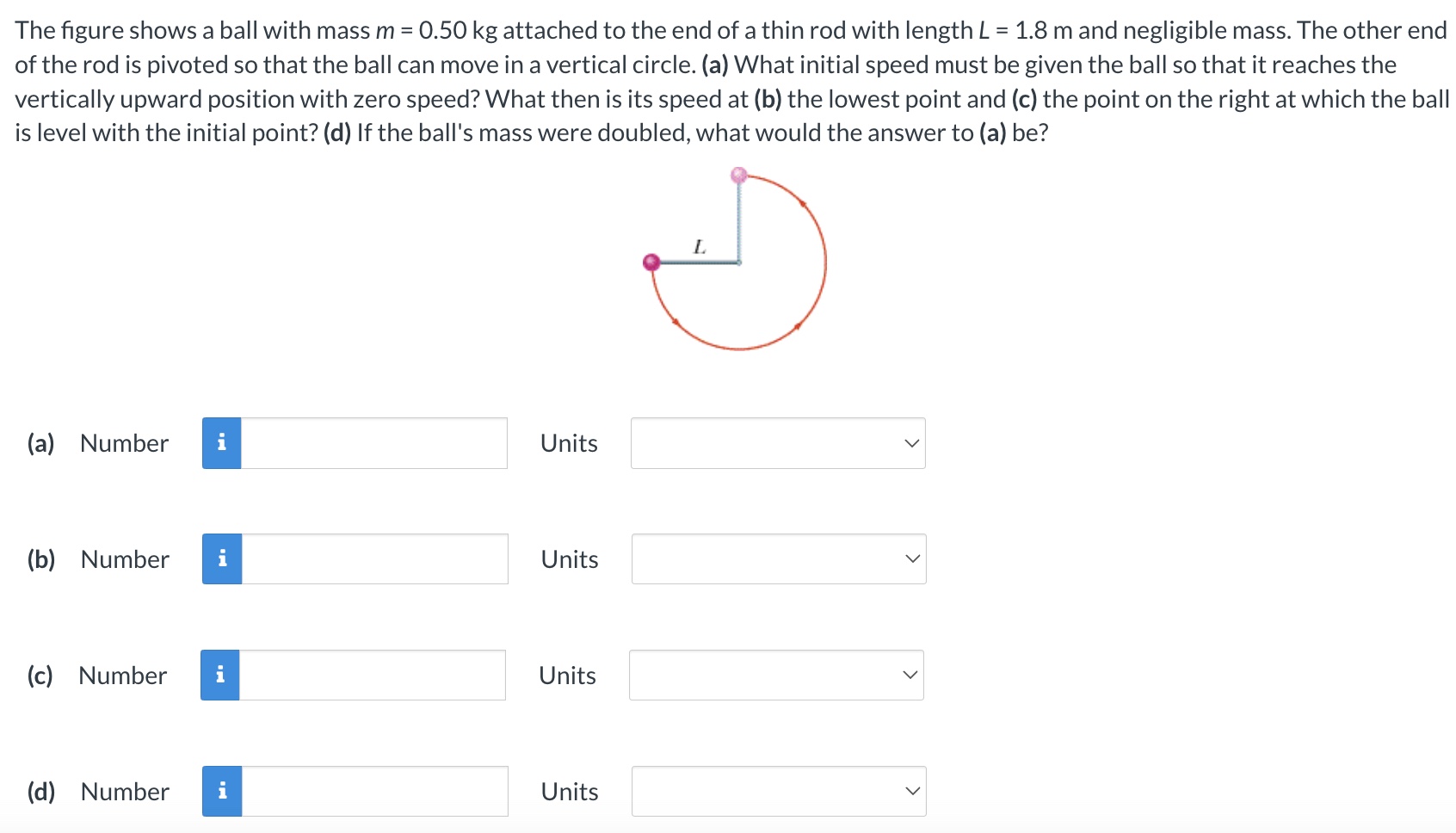The figure shows a ball with mass m = 0.50 kg attached to the end of a thin rod with length L = 1.8 m and negligible mass. The other end of the rod is pivoted so that the ball can move in a vertical circle. (a) What initial speed must be given the ball so that it reaches the vertically upward position with zero speed? What then is its speed at (b) the lowest point and (c) the point on the right at which the ball is level with the initial point? (d) If the ball's mass were doubled, what would the answer to (a) be? (a) Number Units (b) Number Units (c) Number Units (d) Number Units
